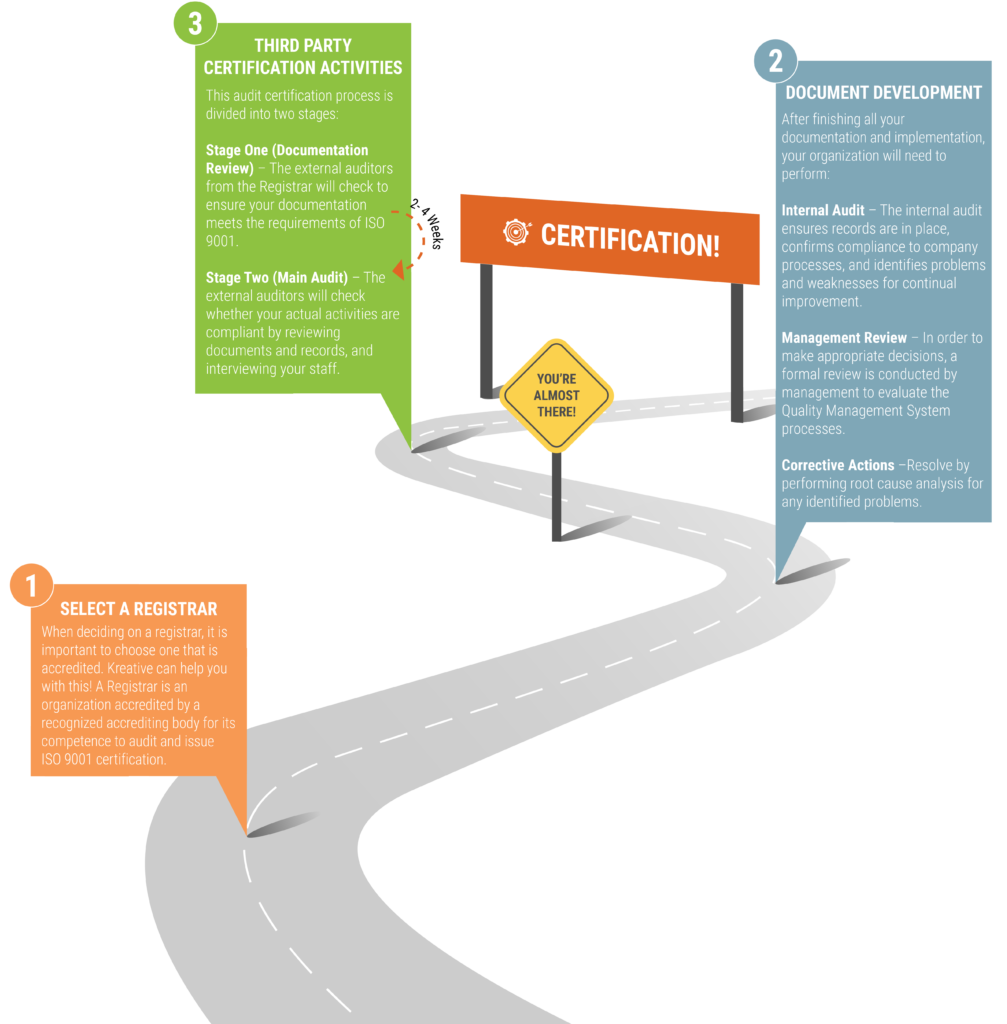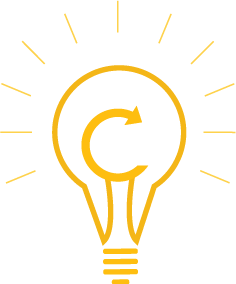Home | Our Services
Request a FREE Consultation here:
MORE ON QUALITY CERTIFICATION:
ISO 9001:2015
What is ISO 9001:2015 and why is it good for your organization?
The International Standards Organization (ISO) 9001:2015 Quality Management System certification is internationally recognized, and is a powerful symbol to your customers that your company values excellence and strives to consistently produce quality products and services. In fact, there are over one million companies and organizations in over 170 countries certified to ISO 9001:2015. Based upon a quality management model consisting of seven “Quality Management Principals”, ISO 9001:2015 defines business principles and associated best practices and processes. These guide a business culture and structure which allow you to consistently deliver to high quality products and services to meet industry, statutory/regulatory, and individual customer requirements. The ISO 9001:2015 certification sets the stage for continually improving your business, and provides the ability to leverage your capabilities for sustained growth.
What is a Quality Management System?
The Quality Management System, which is often referred to as a QMS, is a collection of business processes focused on consistently meeting customer requirements and enhancing their satisfaction. It is aligned with an organization’s purpose and strategic direction. This collection of documentation defines the set of internal rules that will govern how your company creates and delivers your product or service to your customers. The QMS is tailored to the needs of your company and the product or service you provide. The ISO 9001:2015 standard provides a set of guidelines to help make sure that you do not miss any important elements that a QMS needs to be successful.
What are the requirements for ISO 9001:2015 standard?
The ISO 9001:2015 structure is split into ten sections. The first three are introductory, with the last seven containing the requirements for the Quality Management System.
Clause 4: Context of the Organization – Here we work to understand the organization and its context to include the monitoring of external and internal issues. We also review the needs and the expectations of interested parties.
Clause 5: Leadership – The leadership requirements cover the need for top management to be instrumental in the implementation of the QMS. Top management needs to demonstrate commitment to the QMS by ensuring customer focus, defining and communicating the quality policy and assigning roles and responsibilities throughout the organization.
Clause 6: Planning – Top management must also plan for the ongoing function of the QMS. Risks and opportunities of the QMS in the organization need to be assessed, and quality objectives for improvement need to be identified and plans made to accomplish these objectives.
Clause 7: Support – The support section deals with management of all resources for the QMS, covering the necessity to control all resources, including human resources, buildings and infrastructure, the working environment, monitoring and measurement, resources, and organizational knowledge. The section also includes requirements around competence, awareness, communication and controlling documented information (the documents and records required for your processes).
Clause 8: Operation – The operation requirements deal with all aspects of the planning and creation of the product or service. This section includes requirements on planning, product requirements review, design, controlling external providers, creating and releasing the product or service, and controlling nonconforming process outputs.
Clause 9: Performance Evaluation – This section includes the requirements needed to make sure that you can monitor whether your QMS is functioning well. It includes monitoring and measuring your processes, assessing customer satisfaction, conducting internal audits, and performing ongoing management reviews of the QMS.
Clause 10: Improvement – This last section includes the requirements needed to make your QMS better over time. This includes the need to assess process nonconformity and taking corrective actions for processes.
ISO 9001:2015 - Road to Certification!
Once you have decided on Kreative for your Audit Preparation Needs, and reviewed our process and proven method (see Our Process), your assessment is as simple as 1, 2, 3!

Why Kreative?
WE WORK IN PARTNERSHIP WITH YOU
WE USE AN INNOVATIVE APPROACH


Kreative will work with you to set up document and database repositories to organize your business assets, providing easy access for everyone in your organization, as well as external auditors who will review these assets as part of the certification process.

Kreative understands the substantial effort and cost associated with preparing for external certifications and assessments. Our kARM tool allows an organization to organize according to each model, but more importantly, leverages its assets to satisfy the various requirements. For example, both the ISO and CMMI models focus on Project Management and your organization’s Project Management assets can be linked within the tool, saving you time, effort, and money.
